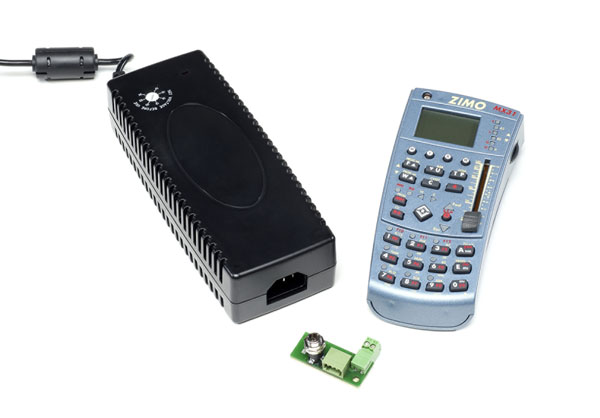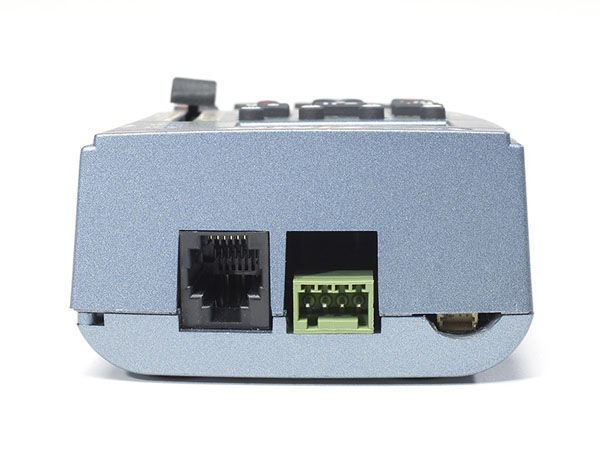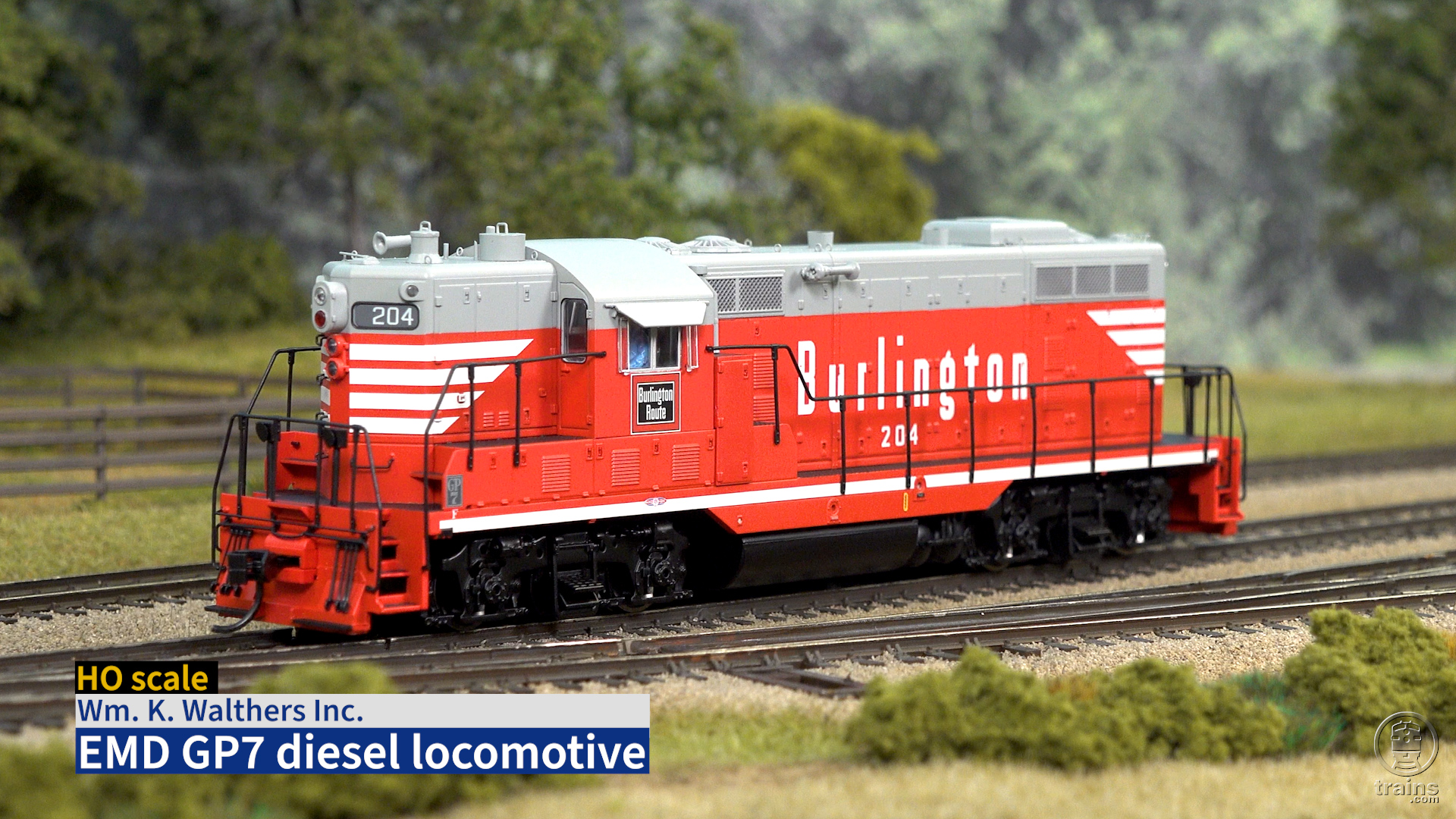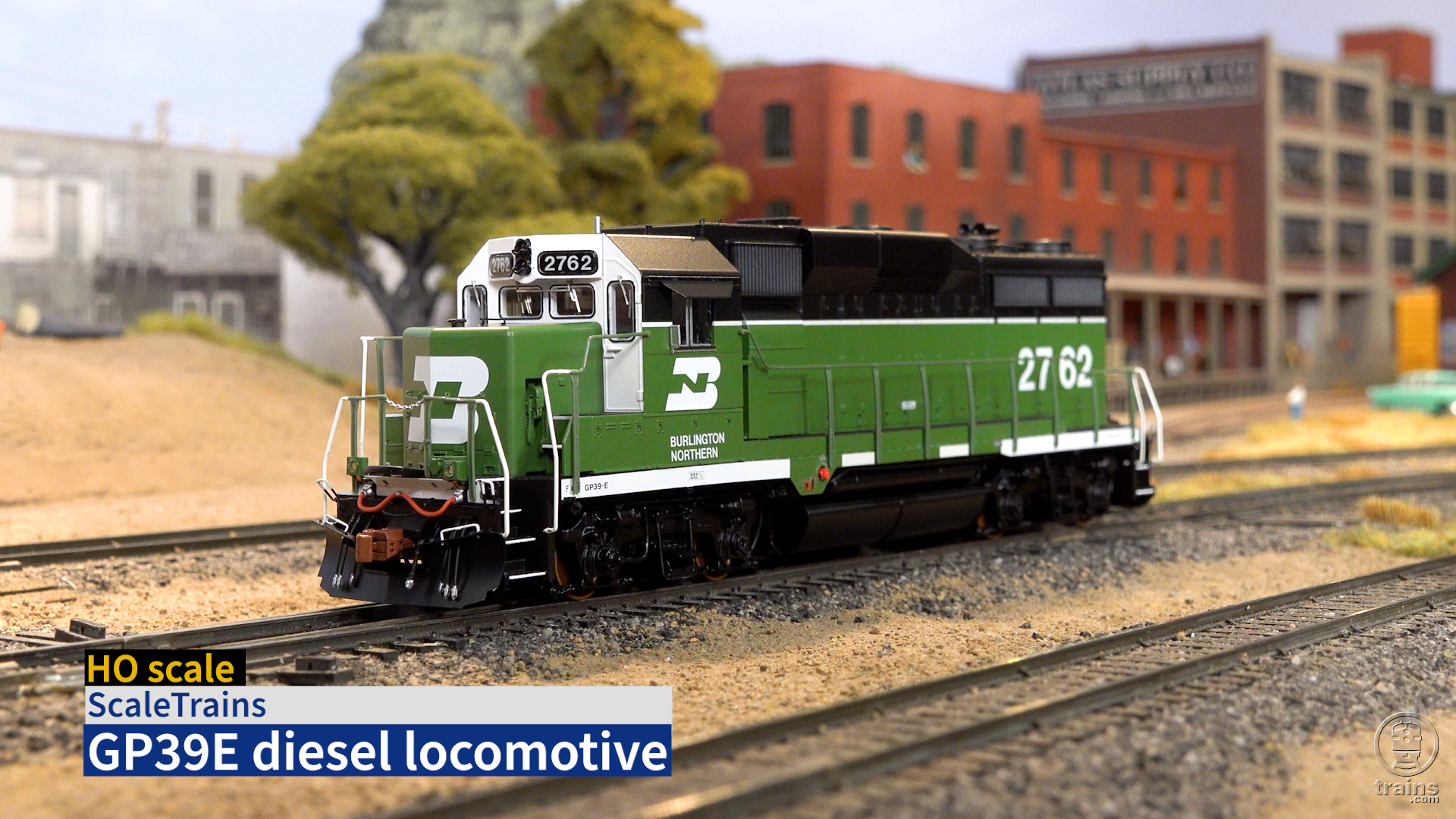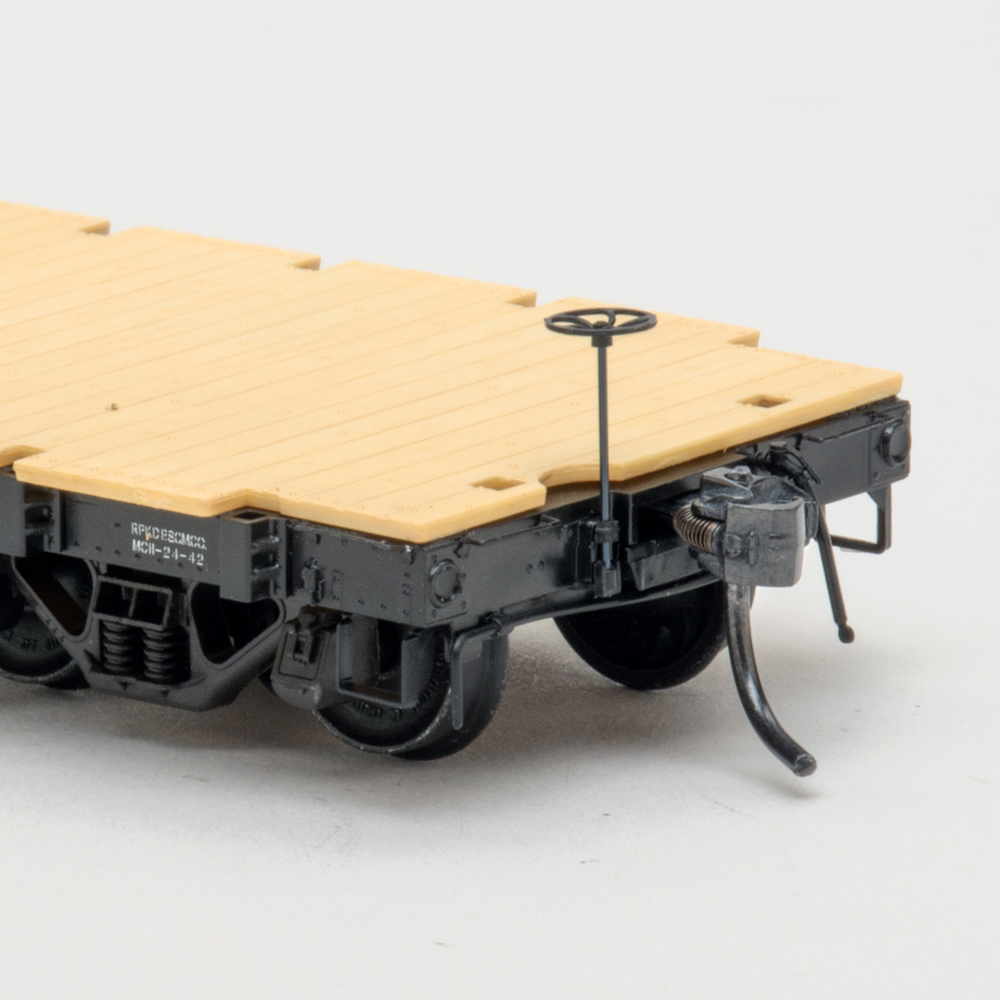Getting started. I set up the Zimo MX31ZL DCC system and was running trains in about five minutes. The connection panel includes a barrel jack for the power supply, a four-pin socket for the four-wire cable that connects to the cab, and a pair of screw terminals for the track leads. Unfortunately there isn’t a separate set of terminals for a programming track, which would have made it easier to set up an isolated programming track section.
The connection panel can be mounted on the layout fascia orunder the benchwork. Since the cab also contains the command station and the booster, it must remain plugged into the panel.
In LOCO and SWI modes you can also choose between the EXPERT and OPERATOR display. The OPERATOR display shows the active decoder’s address, speed steps, and direction, while the EXPERT mode uses a split screen that shows the OPERATOR mode information with a recall stack of decoder addresses underneath it.
Train speed is controlled by a slider key on the front of the cab and a side-mounted thumbwheel for finer control. By pressing
the “RG” key you can divide the increments of the slider key in half. The cab also has a direction button and an emergency stop button.
In LOCO mode you can use various “E-procedures” outlined in the instruction manual. For example, pressing the E key followed by 0 lets you toggle between 14, 28, or 128 speed steps.
You can use the alpha-numeric keypad to assign addresses and give specific names to locomotives or routes on your railroad. These keys are also used to trigger DCC functions and other features of the system. Many of the other keys have multiple functions as outlined in the instruction manual. I found it useful that the menu-driven Zimo system will often prompt you to press a specific key in the display, such as “A” for address or “C” for setting a configuration variable.
You can operate up to 10 locomotives in a consist by selecting each locomotive’s address and pressing the “TP” key. All the decoder addresses with a “T” after them on the display will then operate as a single unit. These locomotives will also be saved as a consist in the recall memory stack until you remove them from the consist. For advance consisting and to save multiple consist addresses in the recall memory stack, you’ll need to program configuration variables (CVs) 19, 21, and 22, as long as these CVs are supported by your particular decoder.
DCC programming. The system features an array of programming capabilities, and programming decoders is easy to follow via the menus on the cab display. You negotiate the menus using the thumbwheel and “soft keys” underneath the LCD screen. These keys have different functions depending on the menu that you’re in, and the menu options are clearly defined on the screens.
The MX31ZL supports service mode programming, using an isolated programming track, or ops mode programming (programming on the main.) For most decoders, CVs can only be read back in service mode.
Other user-friendly programming menus allow you to program accessory decoders as well as set up and name turnout routes or an operating signal system.
The system also supports RailCom, a bidirectional communication system.
Other features include a fast clock and a track voltage and current draw display.
Upgradeable and expandable. The Zimo MX31ZL cab has a USB socket on the side of the cab so that the user can download software upgrades to the system from Zimo’s Web site using a USB cable or memory stick. (You can also upgrade Zimo decoders from the Web site.)
Zimo refers to the command bus of its systems as the CAN bus. A single jack on the front of the MX31ZL cab lets you connect up to five additional tethered MX31 cabs to the system using extra CAN bus cables and plug panels. You can also add a radio receiver to use Zimo’s MX31FU wireless cabs. And, the MX31ZL cab can be used as a tethered cab with other Zimo command stations.
Full of advanced features and easy to upgrade and expand, the Zimo MX31ZL DCC starter set is a good choice for modelers looking for an easy-to-use system with a full menu of features.
Price: $590.40
Manufacturer
Zimo Electronik
Distributed by Model Railroad Solutions
1195 Velrose Dr.
Kelowna, B.C., Canada, V1Z 6R7
www.mrsonline.net
14, 28, or 128 speed steps
5.5-amp power supply
5-foot cab tether
Accepts up to 10,239 locomotive addresses
Backlit 7/8″ x 13/8″ screen
Cab measures 11/4″ x 21/2″ x 51/2″
Controls up to six throttles
Control up to 13 DCC functions
Each accessory decoder address from 1 to 512 controls up to 4 paired functions or 8 single functions
USB cable and USB memory stick adapter
Variable track voltage (10 to 22 volts)
Works with Zimo wireless radio receiver and cabs





